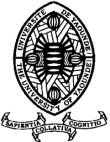Les Cancers Primitifs Multiples au Togo : Une Série Rétrospective de 19 Cas
DOI:
https://doi.org/10.5281/hra.v1i1%20Jan-%20Feb-Mar.4696Abstract
RÉSUMÉ Objectif. Le but de cette étude est de décrire la fréquence, les données épidémiologiques et anatomocliniques des patients ayant présenté des cancers primitifs multiples et de discuter les difficultés de leur prise en charge. Méthodes. Il s’agit d’une étude rétrospective portant sur tous les cas de cancers primitifs multiples avec une confirmation histologique reçus en oncologie entre le 1er Janvier 2016 et le 31 Décembre 2022. Résultats. Au total 19 cas de cancers primitifs multiples ont été enregistrés soit une fréquence de 1,1%. L’âge moyen des patients était de 63,5 ans. Il y avait 10 hommes (52,6%) et 9 femmes (47,4%) Tous les patients avaient une double localisation tumorale. Les cancers primitifs multiples étaient synchrones chez 10 patients (52,6%) et métachrones chez 9 patients (47,4%). Le tiers des seconds cancers synchrones a été fortuitement diagnostiqué lors de l’ évaluation du premier cancer. La plupart des cancers métachrones (70%) sont apparus dans l’intervalle de 6 à 24 mois. Les trois associations de cancers multiples les plus fréquents étaient les associations d’un cancer de la prostate à un cancer digestif (n=5/19 ; 26,3%), d’un cancer gynécologique à un cancer digestif (n=3/19 ; 15,8%) et les associations sein-sein (n=3 /19 ; 15,8%). Conclusion. Les cancers primitifs multiples sont peu fréquents dans notre pratique mais posent un réel problème diagnostic et thérapeutique. Cette étude montre la nécessité d’une évaluation rigoureuse des patients afin de détecter les tumeurs synchrones et d’un suivi régulier pour détecter précocement les seconds cancers métachrones. ABSTRACT Aim. This study aimed to describe the clinical features and treatment of multiple primary cancers and discuss the difficulties of their management in our practice. Methods. We retrospectively analyzed the features of multiple primary cancers admitted to the oncology unit of Sylvanus Olympio Teaching Hospital over a 7-year period from January 2016 to December 2022. Results. A total of 19 cases of multiple primary cancers were enregistered, representing a frequency of 1.1%. The mean age of the patients was 63.5 years. There were 10 men (52.6%) and 9 women (47.4%). All patients had a double tumor location. Multiple primary cancers were synchronous in 10 patients (52.6%) and metachronous in 9 patients (47.4%). A third of synchronous second cancers were incidentally diagnosed during the evaluation of the first cancer. Most metachronous cancers (70%) appeared between 6 and 24 months. The three most frequent associations of multiple cancers were associations of prostate cancer with digestive cancer (n=5/19; 26.3%), gynecological cancer with digestive cancer (n=3/ 19; 15.8%), and breast-breast associations (n=3/19; 15.8%). Conclusion. Multiple primary cancers are rare in our practice. This study emphasizes the necessity of a rigorous evaluation of patients to detect synchronous tumors and follow-up for early detection of second metachronous cancers.Downloads
Published
How to Cite
Issue
Section
License
Authors who publish with this journal agree to the following terms:
- Authors retain copyright and grant the journal right of first publication with the work simultaneously licensed under a Creative Commons Attribution License CC BY-NC-ND 4.0 that allows others to share the work with an acknowledgement of the work's authorship and initial publication in this journal.
- Authors are able to enter into separate, additional contractual arrangements for the non-exclusive distribution of the journal's published version of the work (e.g., post it to an institutional repository or publish it in a book), with an acknowledgement of its initial publication in this journal.
- Authors are permitted and encouraged to post their work online (e.g., in institutional repositories or on their website) prior to and during the submission process, as it can lead to productive exchanges, as well as earlier and greater citation of published work










